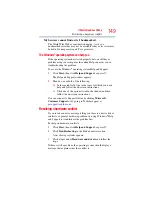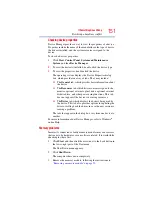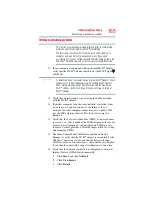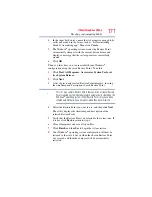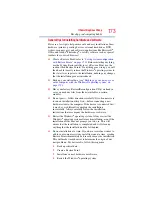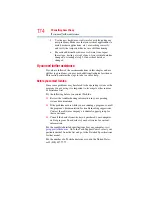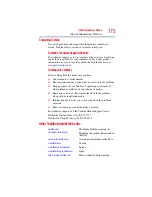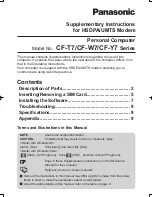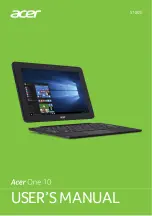
160
If Something Goes Wrong
Resolving a hardware conflict
PC Card checklist
❖
Make sure the card is inserted properly into the slot.
❖
Make sure all cables are securely connected.
❖
Occasionally a defective PC Card slips through quality control.
If another computer with a PC Card slot is available, try the
card in that machine. If the card malfunctions again, it may be
defective.
Resolving PC Card problems
Here are some common problems and their solutions:
The slot appears to be dead. PC Cards that used to work no
longer work.
Check the PC Card status:
1
Click
Start
,
Control
Panel
,
System and Maintenance
, and
then
Device
Manager
.
2
Double-click the appropriate PC Card, which will be listed
under one of the categories shown, for example: Disk drives,
Network adapters, Other, etc.
The operating system displays your PC Card’s Properties
dialog box, which contains information about your PC Card
configuration and status.
The computer stops working (hangs) when you insert a PC
Card
.
The problem may be caused by an I/O (input/output) conflict
between the PCMCIA socket and another device in the system. Use
Device Manager to make sure each device has its own I/O base
address. See
“Fixing a problem with Device Manager” on page 150
for more information.
Since all PC Cards share the same socket, each card is not required
to have its own address.
Hot swapping (removing one PC Card and inserting another
without turning the computer off) fails
.
Follow this procedure before you remove a PC Card:
1
Click the
Safely Remove Hardware
icon in the Notification
Area.
The Safely Remove Hardware screen appears.
2
Click
Safely remove
for the device you want to swap.




